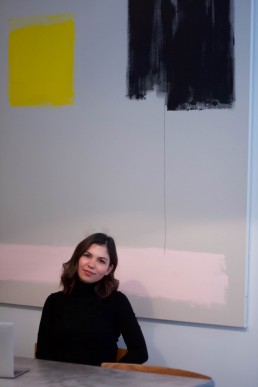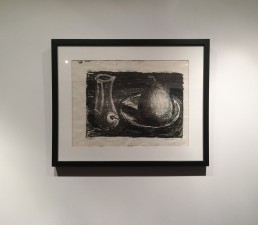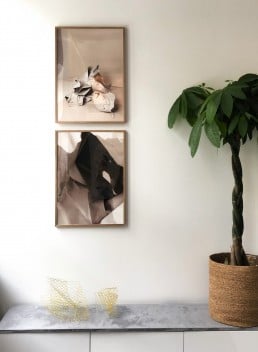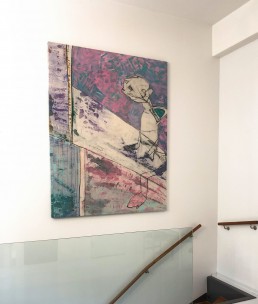Interviews
Interview: Art Collector Alexandra Eldby

Alexandra Eldby might only be three years into her journey of collecting, yet she has always felt intrigued by art’s ability to stir up feelings and to challenge our perception of reality. As the founder of the digital gallery OsloNowhere, she seeks to share her passion for art, firmly believing that digitization can serve as a means to broaden the art market and reach a new generation of art lovers.
What is your earliest memory of art, and what led you to start collecting it?
I must have been exposed to art earlier, but my first memory of art was at the age of eight or nine – seeing Odd Nerdrum’s Self Portrait in Golden Cape. Something about the nudity made a lasting impact… However, it did not burst any interest in collecting. That came later.
How would you describe yourself as an art collector?
As a newbie! I am not even sure I consider myself as consciously collecting. I rather acquire some works that I personally enjoy and feel an urge to possess.
What is the main motivation behind your collecting?
I have always been really into aesthetics. Yet, art appeals more to me than other beautiful objects as it conveys something more – a feeling, association, or a mood. I look for pieces that reflect something that feels relevant to me. That connects with me in some way.
Describe your collection in three words.
Small, random, and playful.

Is there any particular type of art that appeals to you or anything that unites all the works in your collection?
While there is no consistency with regards to medium, I have an appreciation for quality and the process behind the artwork. I usually emphasize the overall experience of a work visually, and enjoy interesting compositions, colour schemes, balance and contrasts.
How important is it for you to meet the artist behind the artwork?
I think that meeting the artist behind the work adds another dimension, which can be very interesting. However, I try to keep a rational approach and remind myself that I am acquiring the work, not the artist. In that sense, I may even prefer not to meet the creator to remain neutral towards the artwork.
What is the most recent piece of art you added to your collection and why?
Saiga by Apen Apen, which is a marbled work on paper. Because I like it and want to look at it whenever I need a reminder that in the end we are all just dust in the wind.
Has digitalization changed the way you collect art?
Most definitely. I have bought some pieces directly from artists, but I usually prefer to browse for art in digital channels. I think that it gives me more perspective and lets me consider pieces without interruptions or distractions.

What or who has influenced you as a collector?
In life, I am often drawn towards the unexplored and undiscovered. A sense of individualism might explain why I especially enjoy finding works by young, unknown artists. In a way, it ensures the exclusivity and distinctiveness.
Is there any specific place you always return to when you need an art fix?
I would have to say OsloNowhere. Since starting the online gallery, I am exposed to artworks on a regular basis and every so often come across pieces that I would like to keep for myself.
The art market has a reputation of being a playground for the elite. What is your experience of this?
I think that the traditional channels of information on art highlight pieces that are out of reach to most people. Some arenas may still be reserved the elite. However, I think that digitalization is making information about new artists and where to find their works more accessible, which in turn is making the market broader.
Where do you think the future of the art market is headed?
To Mars! Beginning 2024.

Top three pieces of advice for new collectors
1. Look at art (online or IRL). Take notice of what captures your attention to define your preferences and narrow down the search.
2. Get social – following people on social media channels whose taste you admire (or knowledge related to art) ensures that you are exposed to new impulses.
3. Do not wait for too long. Someone else might snatch the work that you like. You usually get a good sense about whether you like a piece right away. If you do, go get it!
Top three art destinations
1. Musée d’Orsay in Paris
2. Astrup Fearnley Museum in Oslo
3. Saatchi Gallery in London
Three inspiring artists to watch
1. Hanne Moe
2. BROSLO
3. Katrine R. Lund